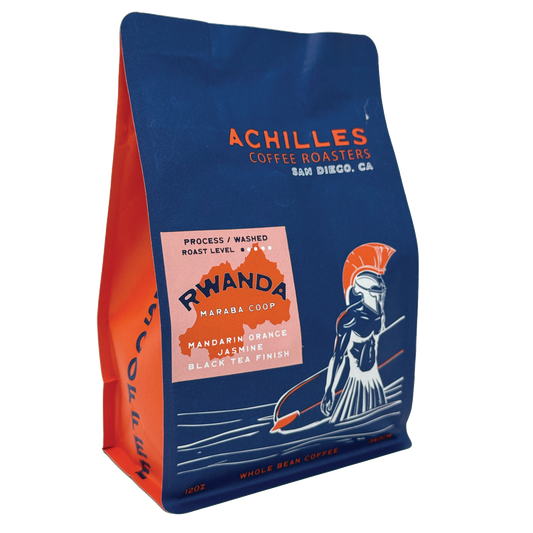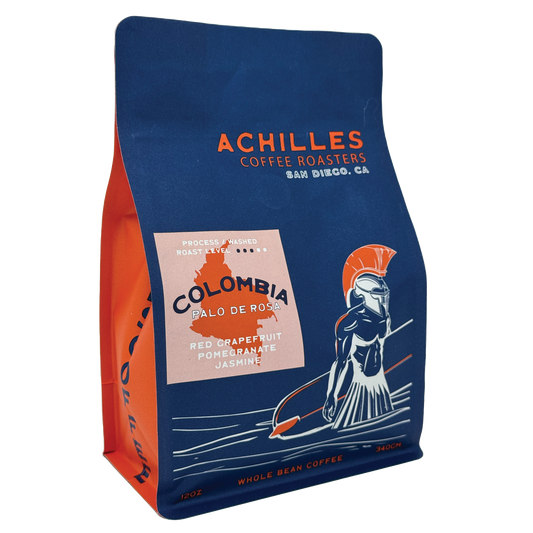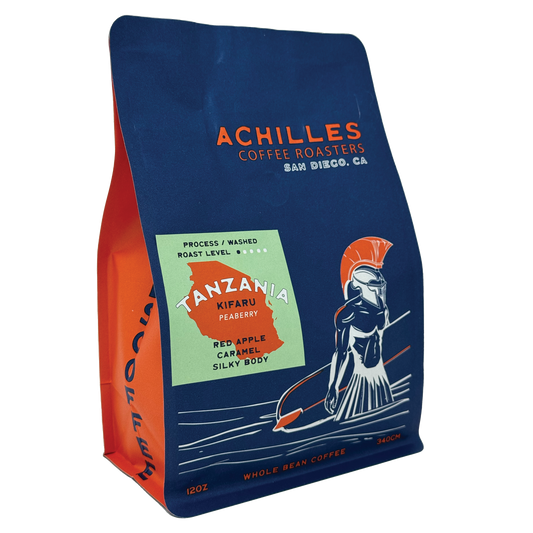When it comes to brewing exceptional coffee, freshness is one of the most important—and often misunderstood—factors. Many people look at the “best by” or “use by” date on packaging, but these don’t tell the full story. The roast date is the real key to understanding when coffee is at its peak flavor and aroma.
Why Roast Date Is More Important Than “Best By” Dates
Unlike shelf-life labels set for retail purposes, the roast date marks the beginning of coffee’s freshness cycle. From the moment beans are roasted, they undergo chemical and physical changes:
-
Degassing: Beans release carbon dioxide (CO₂), which can affect brewing and extraction.
-
Oxidation: Oxygen slowly breaks down delicate oils and flavor compounds, leading to staleness.
-
Moisture loss: Over time, beans lose water, changing balance and mouthfeel.
Understanding these processes explains why coffee roast date matters far more than packaging claims.
What Happens to Coffee After Roasting?
Coffee is much more than just dried beans; it’s a living product that undergoes a fascinating and intricate chemical transformation during and after the roasting process. This transformation is key to unlocking the complex flavors and aromas that make coffee such a beloved beverage worldwide. When green coffee beans are roasted, they are subjected to intense heat, triggering a series of chemical reactions that dramatically change their composition. Two of the most important processes during roasting are the Maillard reaction and caramelization.
The Maillard reaction is a complex interaction between amino acids and reducing sugars in the coffee beans. It’s responsible for developing the rich browning and a wide range of flavor compounds that contribute to coffee’s characteristic taste. Alongside this, caramelization breaks down sugars within the beans, adding sweetness and depth to the flavor profile. Together, these reactions create the rich, roasted notes, body, and aroma that we associate with freshly brewed coffee.
However, roasting is only the beginning of the coffee’s evolution. After the beans are roasted and cooled, they continue to change in several important ways that directly impact their freshness and quality.
Degassing: One of the most critical post-roast changes is degassing, where the roasted coffee beans release carbon dioxide (CO₂). This is a natural and ongoing process, with freshly roasted beans emitting a significant amount of CO₂, especially in the first few days and weeks following roasting. Degassing is essential because trapped CO₂ can negatively affect extraction by causing uneven water flow through the coffee grounds during brewing. However, some level of degassing also signals freshness and vitality in the beans. The timing of brewing in relation to degassing is important—too soon after roasting, and excess CO₂ might create off-flavors or uneven extraction; too late, and the beans might have lost their aromatic freshness.
Oxidation: Once roasted, coffee beans begin to interact with oxygen in the air, which initiates oxidation. Oxidation is a chemical reaction that gradually breaks down the aromatic oils and flavor compounds in the coffee. This process leads to the deterioration of the vibrant and complex flavors, resulting in a stale or flat taste over time. Oxidation happens faster if the coffee is exposed to air, moisture, heat, or light. This is why proper storage—ideally in airtight containers away from sunlight and heat—is crucial to slowing down flavor degradation.
Moisture Loss: Roasted coffee beans also lose moisture gradually after roasting. This moisture loss can influence how the coffee extracts during brewing, affecting balance and mouthfeel. Beans that have lost too much moisture can produce a thin or dull cup, lacking the desirable sweetness and body. Maintaining optimal moisture levels is part of what keeps coffee tasting fresh and full-bodied.
Together, these physical and chemical changes after roasting determine how long your coffee stays fresh and flavorful. Understanding them sheds light on why the roast date matters and why freshly roasted beans almost always outperform those sitting on supermarket shelves for months. It also underscores the importance of proper storage and timely consumption to enjoy the best possible cup.
The Crucial Role of Degassing
Degassing plays a crucial role in why the roast date on coffee packaging is far more important than most people realize. Immediately after roasting, coffee beans contain a high concentration of carbon dioxide (CO₂) trapped within their porous structure. This trapped CO₂ acts as a kind of natural protective barrier, temporarily shielding the beans from oxygen exposure and slowing the oxidation process that causes flavor degradation. However, this same CO₂ also has a significant impact on how the coffee behaves during brewing.
In the first few days after roasting
Coffee beans go through an intense phase of rapid degassing. During this period, the beans release large amounts of CO₂ as the gas escapes through tiny pores on the bean surface. This is a natural and expected process, but it means that beans brewed too soon after roasting will contain excessive CO₂.
Why does this matter for brewing? Freshly roasted beans that are still releasing large volumes of CO₂ can cause a few issues. First, the escaping gas can lead to excessive bubbling or “blooming” during brewing, especially noticeable in manual methods like pour-over or espresso. While some blooming is desirable to release trapped gases and prepare the grounds for extraction, too much CO₂ can cause uneven water flow through the coffee bed, leading to inconsistent extraction. This often results in a cup that tastes sour, sharp, or unbalanced.
For this reason, many experienced baristas and coffee professionals recommend waiting at least 3 to 7 days after roasting before brewing coffee. This resting period allows the beans to degas enough to minimize brewing problems while still preserving their freshness and flavor complexity.
On the other end of the spectrum, once the initial rapid degassing phase passes—typically after about two weeks—the CO₂ levels in the beans drop significantly. As the protective gas barrier weakens, the beans become increasingly vulnerable to oxygen exposure. Without this shield, delicate aromatic compounds and oils start to oxidize and break down more quickly. This oxidation results in a loss of flavor complexity, diminished aroma, and a stale or flat taste in the cup.
Thus, the roast date gives you a reliable indicator of where the beans are in this degassing and freshness cycle. Beans brewed too soon may be overly gassy and difficult to extract properly, while beans brewed too late may have lost the vibrancy and character that make fresh coffee so enjoyable. Balancing this window of freshness is key to consistently brewing delicious coffee.
Peak Freshness Window: When Coffee Tastes Best
Determining exactly how long coffee stays fresh is a nuanced topic, as multiple factors come into play, including roast level, bean variety, storage conditions, and packaging methods. While these variables can influence the rate at which coffee loses its freshness, the specialty coffee community generally agrees on approximate timelines that help guide consumers in maximizing flavor and aroma.
Immediately after roasting, from 0 to 3 days
Coffee beans are at their freshest in terms of retaining all their roasted compounds, but they can actually be too “gassy” for ideal brewing. During this initial phase, the beans release a large amount of trapped carbon dioxide (CO₂), which can cause uneven extraction and lead to sour or sharp flavors in the cup. Many baristas recommend allowing the beans to rest a few days before brewing to avoid this issue.
From about 3 to 14 days after roasting
Coffee enters what is commonly called the “peak freshness” window. During this period, degassing has slowed enough to minimize brewing complications, but the aromatic oils and flavor compounds remain vibrant and well-preserved. This timeframe typically offers the best balance between acidity, sweetness, aroma, and body, making it ideal for most brewing methods. Many specialty coffee enthusiasts consider this the sweet spot for enjoying freshly roasted beans.
Between 14 and 28 days post-roast
Coffee starts to lose some of its brightness and aromatic complexity. While still enjoyable, the flavors may not be as pronounced or lively as during peak freshness. Proper storage during this phase is critical; beans kept in airtight containers, away from heat, moisture, and light, can retain much of their quality. Those stored poorly during this period will degrade more rapidly.
From 1 to 3 months after roasting
The decline in flavor becomes more noticeable. Coffees brewed at this stage tend to taste flatter, with muted acidity and diminishing aroma. Stale or dull notes can creep into the cup as the volatile compounds that give coffee its character break down further.
Beyond 3 months
Coffee is generally considered stale. At this point, the flavor profile is significantly degraded, lacking complexity and often exhibiting off-flavors such as cardboard-like or musty tones. While still technically safe to consume, coffee past this stage no longer delivers the rich sensory experience that fresh coffee provides.
It’s important to note that these timelines assume optimal storage conditions: beans kept in a cool, dark place, sealed in airtight containers that protect them from exposure to heat, moisture, oxygen, and light. Packaging innovations such as one-way valves and nitrogen flushing can also help extend freshness by allowing CO₂ to escape without letting oxygen in.
Understanding these general guidelines can help coffee drinkers make better purchasing and storage decisions, ensuring that every cup is brewed from beans that showcase coffee at its freshest and most flavorful.
Why Supermarket Coffee Often Disappoints
One of the biggest frustrations many coffee lovers face is purchasing coffee from grocery stores or large retailers only to find that it lacks the flavor, complexity, and freshness they expected. This common disappointment can be attributed to several key factors inherent to how supermarket coffee is produced, packaged, and sold.
First and foremost, roast date transparency is often missing or obscured. Many mass-produced coffee brands do not print a clear roast date on their packaging, or the coffee may have been sitting on shelves for months by the time it reaches consumers. Without knowing when the coffee was roasted, it’s nearly impossible for buyers to assess its freshness. Since coffee begins to lose its optimal flavors shortly after roasting, coffee that’s several weeks or even months old will inevitably taste stale or flat.
Packaging also plays a significant role in the degradation of supermarket coffee quality. Specialty coffee roasters typically use bags with one-way valves that allow carbon dioxide (CO₂) to escape while preventing oxygen from entering—this helps maintain freshness and prevents oxidation. However, many supermarket brands use simpler packaging that lacks these protective features. Without proper packaging, oxygen can penetrate the bag and accelerate staling, causing the coffee’s delicate aromatic oils and flavor compounds to break down faster. Even foil bags without valves may not be sufficient to preserve peak freshness over time.
Another important factor is the scale and logistics of roasting and distribution. Supermarket coffee is often roasted in large, industrial batches designed to meet the demands of wide distribution networks. This means the beans can spend considerable time in warehouses, on trucks, and on store shelves before reaching the consumer. The longer the time between roasting and brewing, the more the coffee’s quality deteriorates, leading to muted flavors and a lack of vibrancy.
Additionally, the quality of the beans used in mass-market coffee blends often differs from what specialty coffee enthusiasts expect. To keep costs low and supply steady, many large brands use lower-grade beans or a mix of robusta and arabica beans. These beans typically have fewer complex flavor notes and a tendency to taste flat, bitter, or dull, even when freshly roasted. The combination of lower quality beans and prolonged storage further exacerbates the loss of flavor and complexity.
All these factors combined explain why supermarket coffee frequently disappoints those seeking a fresh, flavorful cup. For coffee lovers wanting to experience the full depth and character that coffee can offer, purchasing from specialty roasters who prioritize fresh roasting dates, high-quality beans, and proper packaging is often the better choice. Understanding these differences can help consumers make more informed decisions and elevate their daily coffee ritual.
How to Use Roast Date Information to Your Advantage
To truly savor the freshest coffee possible, it’s essential to learn how to read and interpret roast date information on your coffee packaging. This simple step can make a huge difference in the quality of your daily brew and help you avoid stale or flat-tasting coffee.
First and foremost, always look for a roast date. Reputable specialty coffee roasters understand the importance of freshness and will clearly print the roast date on their bags, usually near the "best by" or "use by" date. This transparency allows consumers to gauge how recently the coffee was roasted and make informed purchasing decisions. If you come across coffee without a visible roast date, it’s wise to be cautious—there’s no reliable way to know how fresh it is, and chances are the flavor won’t be optimal.
Once you’re comfortable checking roast dates, plan your coffee purchases accordingly. The ideal window to buy coffee is typically within one or two weeks of the roast date. This ensures you get the coffee during its peak freshness, when flavors and aromas are most vibrant. After roasting, coffee generally stays at its best for about 3 to 4 weeks. Beyond this period, even with good storage, the coffee’s complexity and brightness start to fade, leading to a duller cup. So, try to consume your coffee within this timeframe for the best experience.
To maintain freshness, it’s also a smart idea to buy smaller quantities more frequently. For those who drink coffee daily, purchasing large bags that take months to finish can result in stale beans long before the bag is empty. Opting for smaller bags allows you to enjoy coffee at its freshest without waste. Frequent purchases of smaller amounts keep your coffee stash rotating, maximizing flavor and aroma.
Proper storage is equally crucial in preserving freshness once you bring your beans home. Use airtight containers that protect coffee from exposure to air, moisture, and odors, which can degrade quality quickly. Store your coffee in a cool, dark place away from direct sunlight and heat sources such as ovens or stovetops. While some coffee drinkers store beans in the fridge or freezer, this can introduce moisture and odors if not done carefully. If you have large quantities of coffee you won’t use soon, freezing in an airtight container can be acceptable, but avoid repeatedly thawing and refreezing as this accelerates flavor loss.
By paying attention to roast dates, buying in manageable amounts, and storing your coffee correctly, you set yourself up for a consistently fresh, flavorful cup—unlocking the full potential of each roast and enhancing your daily coffee ritual.
Does Grinding Affect Freshness?
Absolutely. Once coffee beans are ground, their surface area increases significantly, which has a major impact on freshness and flavor. Grinding breaks the beans into smaller particles, exposing far more of the coffee to oxygen. This exposure accelerates the oxidation process, causing the coffee to stale much faster than whole beans. Aromatic compounds, essential oils, and volatile flavors that give coffee its complexity begin to degrade rapidly once exposed to air.
This is why grinding your coffee just before brewing is widely regarded as the best practice among coffee professionals and enthusiasts. Freshly ground coffee preserves more of the bean’s vibrant flavors and aromas, resulting in a richer, more nuanced cup. In contrast, pre-ground coffee, even if freshly roasted, can lose its optimal flavor within hours or days, depending on how it’s stored.
Moreover, whole bean coffee with a fresh roast date offers the greatest control over grind size, allowing you to tailor your grind to your preferred brewing method—whether that’s a fine grind for espresso or a coarser grind for French press. This control further enhances the extraction and ultimately the taste of your coffee.
In summary, to maximize flavor and freshness, choosing whole bean coffee and grinding it immediately before brewing is the key. This simple step helps lock in the coffee’s full potential, ensuring every cup you make is as vibrant and delicious as possible.
Special Packaging Innovations to Preserve Freshness
Many specialty coffee roasters invest in advanced packaging technologies to preserve the freshness and quality of their beans for as long as possible. These innovations address the key challenges of oxidation and degassing, which naturally occur after roasting. Here are some common techniques roasters use:
One-way valves: These clever valves allow the carbon dioxide (CO₂) produced by freshly roasted coffee to escape from the bag without letting oxygen back in. Since CO₂ build-up can cause bags to puff up or even burst, these valves protect the package while preventing oxygen exposure, which would accelerate staling.
Nitrogen flushing: Before sealing, some roasters flush the bags with nitrogen gas to displace oxygen. Because nitrogen is an inert gas that doesn’t react with coffee compounds, removing oxygen helps slow down the oxidation process, which is one of the primary causes of flavor degradation.
Vacuum sealing: Another approach is vacuum sealing, where air is removed from the package before sealing. By minimizing the presence of oxygen, vacuum sealing reduces exposure to elements that cause the coffee to go stale. This method also helps keep the aroma locked inside the bag.
While these packaging technologies can significantly extend the shelf life of coffee and help maintain its flavor integrity, they cannot completely halt the natural aging process. Coffee beans continue to undergo chemical changes over time, which impact aroma, acidity, and overall taste.
Therefore, freshness always comes down to timing: combining a recent roast date with proper storage and timely consumption is the best way to enjoy coffee at its peak. Even the best packaging won’t substitute for buying freshly roasted beans and storing them in a cool, dark, airtight environment, then grinding and brewing them within a few weeks of roasting.
Summary: Why Roast Date Should Be Your Top Priority
Freshness is one of the most critical factors that directly impact the overall flavor quality of your coffee. Freshly roasted coffee beans are bursting with vibrant, complex aromas that awaken your senses and prepare your palate for an exceptional experience. The acidity is well-balanced, offering brightness without harshness, while the complexity reveals layered notes—whether floral, fruity, nutty, or chocolaty—that make each sip intriguing and satisfying. In contrast, stale coffee loses these nuanced characteristics and often tastes flat, dull, or even bitter, leaving you with a disappointing cup that never quite lives up to its potential.
Understanding the role of degassing is equally important for achieving the best brew. After roasting, coffee beans release carbon dioxide (CO₂) in a process called degassing, which influences extraction and flavor. Knowing the roast date helps you time your brewing to coincide with the optimal degassing window, typically a few days to a week after roasting. Brewing too early when CO₂ levels are very high can cause uneven extraction and off-flavors, while brewing too late can mean diminished aroma and a less vibrant cup.
Supermarket coffee, unfortunately, usually lacks the freshness needed for a truly great cup. It’s often roasted long before it reaches the shelves, packaged in ways that do little to preserve freshness, and produced on a massive scale with less attention to quality control. These factors contribute to a coffee experience that feels generic and underwhelming, far from what specialty coffee can offer.
To maximize flavor and aroma, buy fresh, whole bean coffee directly from roasters who clearly label roast dates on their packaging. This transparency ensures you know exactly how recently the coffee was roasted, allowing you to enjoy it at its peak. Once you have fresh beans, proper storage is essential—keep them in an airtight container away from light, heat, and moisture to slow down staling. Lastly, grind your coffee just before brewing to preserve its aromatic oils and delicate flavors, ensuring each cup delivers the richness and complexity you expect.
Final Thoughts
Freshness isn’t just a marketing buzzword or a trendy phrase tossed around by coffee enthusiasts—it’s a fundamental, scientifically backed reality that has a profound impact on the flavor, aroma, and overall quality of your coffee. The moment coffee beans leave the roaster, a series of complex chemical changes begin to take place. These changes continue as the beans degas, oxidize, and gradually lose moisture and volatile compounds that contribute to their unique taste profile. Understanding this timeline and the role that freshness plays allows you to approach coffee selection and brewing with greater knowledge and intention.
By paying close attention to roast dates and learning about what happens to coffee after roasting, you empower yourself to make smarter purchasing decisions. Instead of buying coffee that has been sitting on a shelf for months, you can seek out freshly roasted beans that are still within their peak flavor window. This shift in buying habits transforms the way you experience coffee—from a routine caffeine fix to an exciting sensory journey where each cup reveals new layers of complexity and delight.
Moreover, when you grasp the science of freshness, you also improve your brewing results. Knowing when to brew your coffee—typically after a short rest period to allow degassing—means you can avoid issues like uneven extraction or off-flavors caused by too much trapped CO₂. This awareness lets you enjoy a more balanced, vibrant cup that showcases the full spectrum of aromas and tastes your beans were meant to deliver.
So next time you’re standing in front of the coffee shelf or browsing online, remember that the date printed on the bag is far more than just a number or a routine label. It is your key to unlocking peak flavor and freshness. It’s a reminder that coffee is not a static commodity but a living, evolving craft. The freshest coffee offers the richest experience—one that connects you more deeply with the origins of the beans, the skill of the roaster, and the pleasure of a perfectly brewed cup. Prioritize freshness, and you’ll discover how rewarding and dynamic coffee drinking can truly be.








